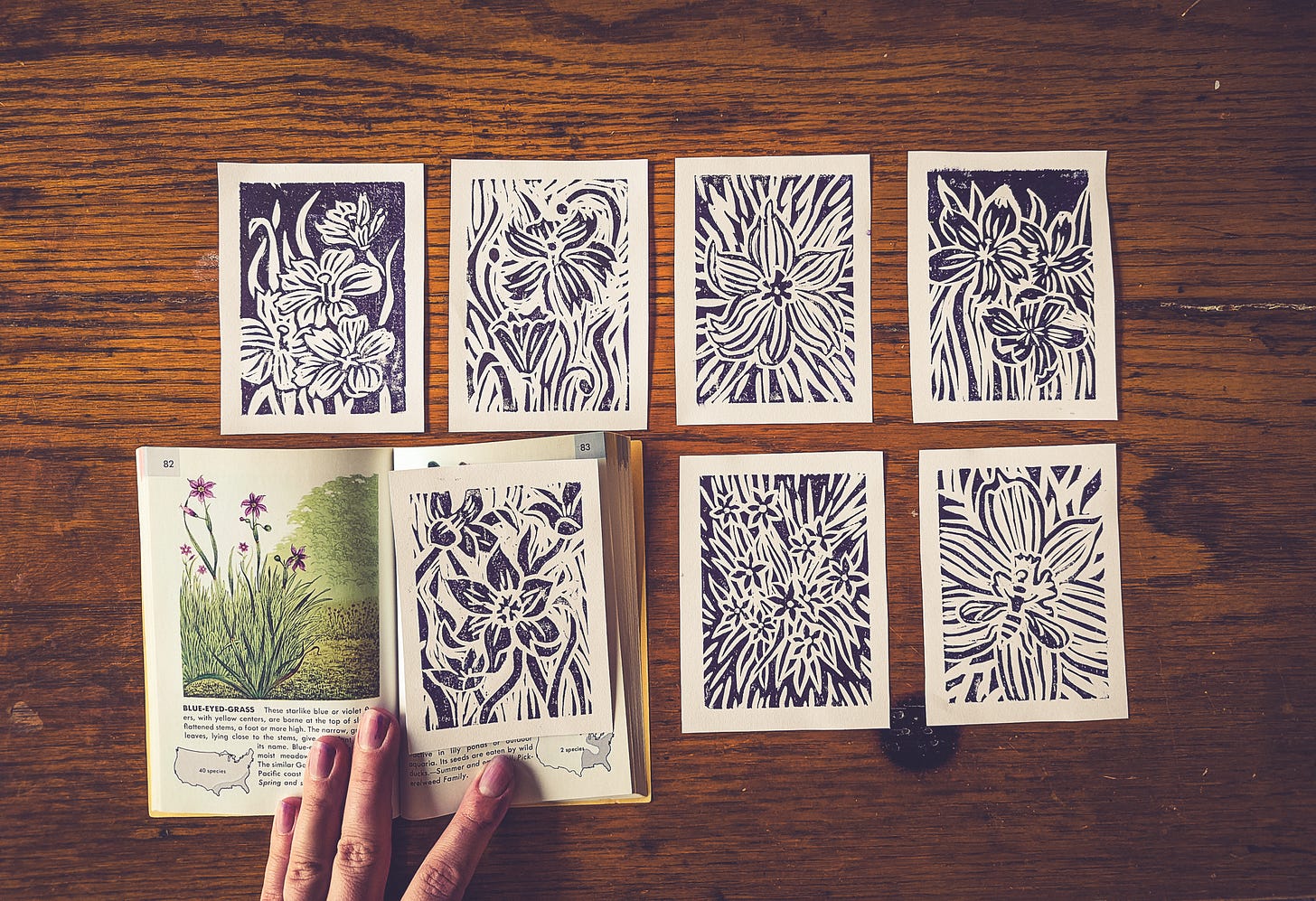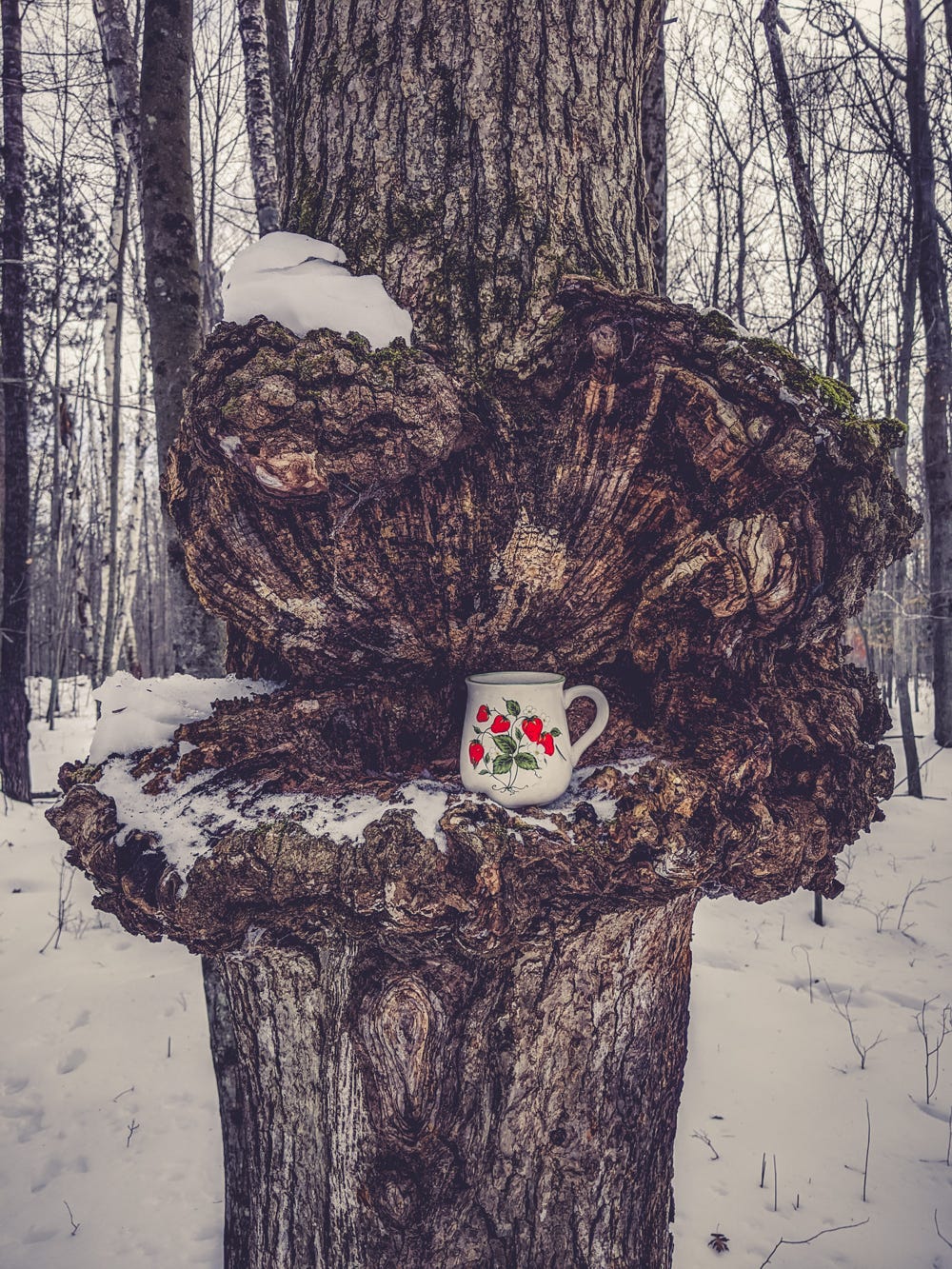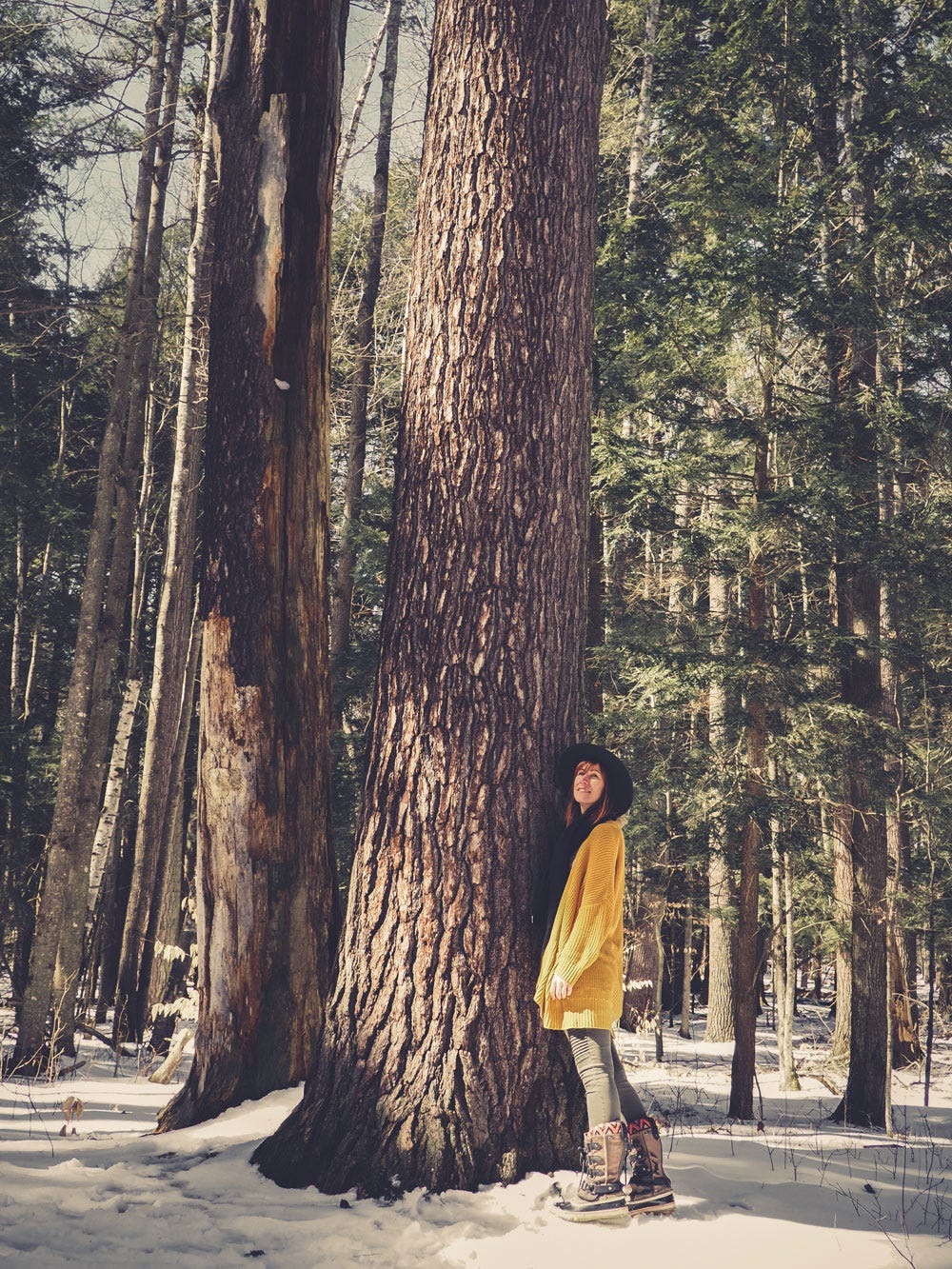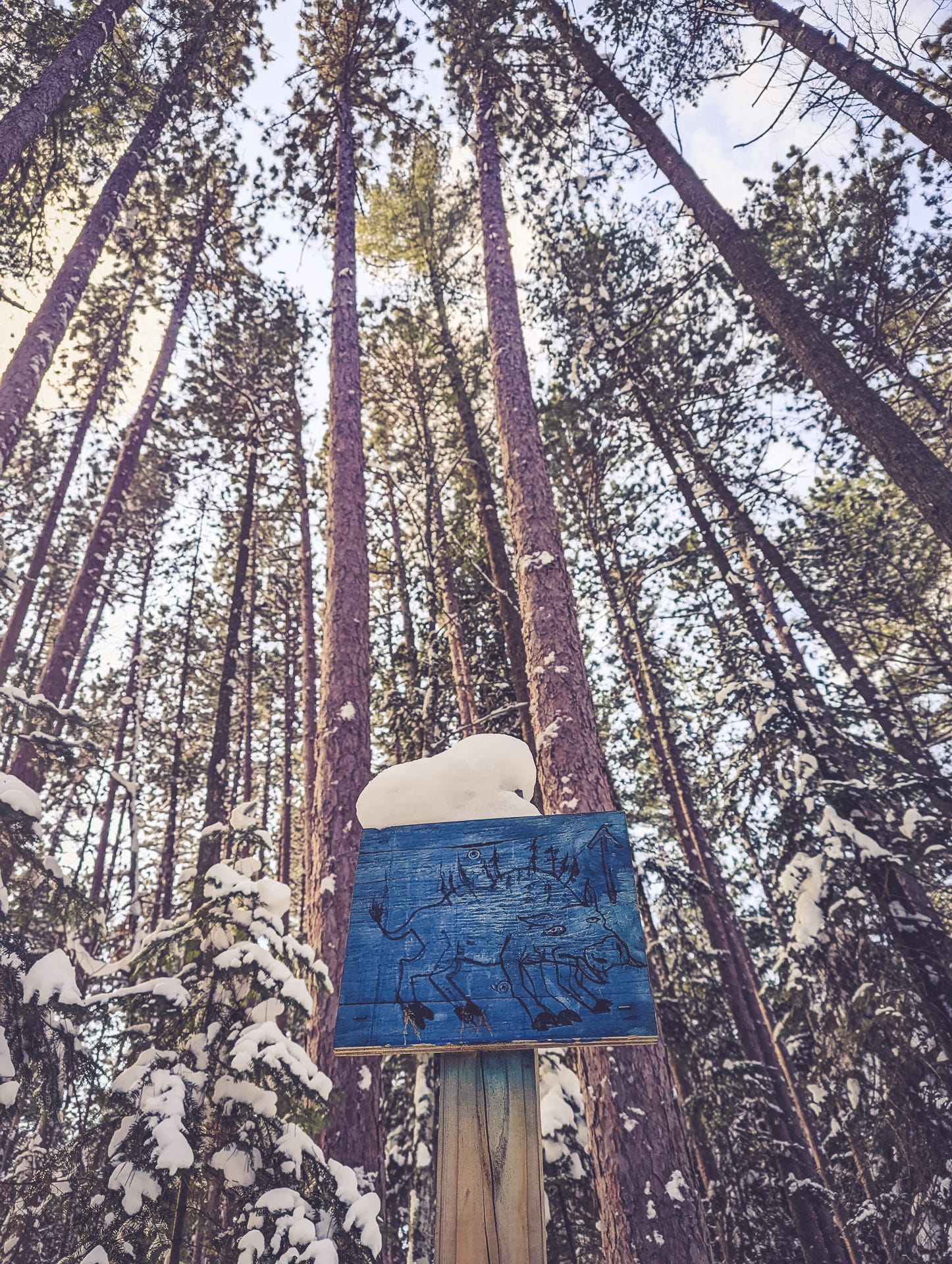BLUE-EYED-GRASS: These starlike blue or violet flowers, with yellow centers, are borne at the top of slender, flattened stems, a foot or more high. The narrow, grasslike leaves, lying close to the stems, give the plant part of its name. Blue-eyed-grass thrives in moist meadows and open places. The similar Golden-eyed-grass of the Pacific coast is, of course, yellow. — Spring and summer. Iris family.
~ FLOWERS by Dr. Herbert Zim and Dr. Alexander Martin
Old-growth forests met no needs. They simply were, in a way that bore no questions about purpose or value. They could not be created by men. They could not even be understood by men. They had too many parts that were interconnected in too many ways. Change one part and everything else would change, but in ways that were unpredictable and often inexplicable. This unpredictability removed such forests from the realm of human perspectives and values. The forest did not need to justify or explain itself. It existed outside of instrumental human considerations.
~ Eruption by Steve Olson
There’s a hush that creeps into the air when you walk into an old growth forest. Odd sensations play over the skin. It’s almost as if these places breathe, in and out, in and out. You may feel the subtle fluctuation in temperature with each inhale and exhale.
The deeply complex sentience that developed over hundreds of years lives in the mosses and lichens, the hollow cavities of an oak carved over generations and the mink that now lives there, the canopies that are more sky than earth with their towering stature. Everything feels more aware. A soft flush of goosebumps pimples the skin with the attention.
It’s here where the folktales of the world were born. Where primordial witches, spirits that live in trees, fairies among the branches and gnomes under the roots, stories of heroism and tragedy, treasure and disaster spill out from the forests’ dark liminal crevices. It feels as though anything is possible here where the birds don’t shy from human travelers and our cardinal directions mean nothing.
More than half of Michigan’s landscape is forest. I’ve spent years walking through the boggy oak and alder forests, greeting the gentians, vetches, and turtlehead that grow at their feet. I’ve walked the rolling maple and beech forests where some of the most rare medicinal plants are found, solomon’s seal, goldenseal, pipsissewa. I know the acidic forests of white and red pines intimately as they shelter my home, blankets of wintergreen, dewberry, blueberry and bunchberry dotting the ground. And of course those further north forests of the spruces, where they stand testament of the ice age, a feeling of eternity in their presence.
Each one its own piece of the woodland tapestry, weaving in and out of each other.
But only a few of these forests are old growth. Only a few were cherished enough by someone generations ago that they made the effort to ensure its protection from the settler’s saw. Every time I enter one of those lingering forests though, the sacred is all around, tangible, whispering, listening.
The continued loss of these forests is a heartbreak that never mends. The helplessness that accompanies that heartbreak is heavy. But, I recently came across an organization doing amazing things that I think may be worth sharing in this newsletter, as I think many of you feel the same.
The Old-Growth Forest Network is a group whose vision is to establish a piece of forestland in every county of the country that will be preserved for old growth. It can be a forest that is already in that mature stage, or a young forest that will be protected for generations to come. They also work with local tribal representatives to ensure that indigenous traditions and stewardship of the forests is respected and conserved.
What is even more inspiring, is that anyone can help establish these forests in their own county. You can either nominate a forest, or you can become a county coordinator. Your job is to identify potential preserves in your county, establish a relationship with whoever the manager of the particular forest is, fill out any necessary forms and signs, and set up your own dedication ceremony once the forest is established in the network. If you choose, your role can even extend to hosting tours of the forest, conducting species inventories, and promoting public education for your forest.
This is one of the most direct and impactful ways I’ve encountered to make a difference in the protection of forests. I am currently looking into becoming my own county coordinator as I already have many pieces of forestland in mind!
I would love to know if this is something of interest to anyone else. You can lookup on their website if your county already has a coordinator. If it does, you can still volunteer your efforts to assist them.
The vision of an old growth forest in every county gives an aching heart hope. It feels like a small beacon of light in a chaotic future, a little piece of inspiration for your week.
Much love,
Val
P.S. Feel free to share, it’s much appreciated!
2025 Planners are now on sale!
If you want to move deeper into a seasonal land-based life, consider ordering my 2025 Lunar + Seasonal Planner. Because learning to live in tune with the land doesn’t come from grand gestures or life-altering shifts, but rather from daily routines, devotions and observations of the land and how we relate to it.
This yearly planner weaves seasonal land-based practices with modern living so that you can live more intentionally and presently within every season of your life. It was created for the plant people, the land lovers, the gardeners, and the seekers to plan their lives around the rhythms of the earth as our ancestors have for thousands of years. More than just a planner, it is a practical yet spiritual guide to living, working, gardening, and celebrating in tune with the ever-shifting world around us.
Become a free subscriber for weekly musings from the forest. To receive my monthly full moon guide, consider becoming a paid subscriber.










I love this! I had no idea such an organization existed, how wonderful. A beacon of hope!
Thanks for sharing the Old Growth Forest Network information! This is really important. I've shared this with fellow MI Conservation Stewards in my county.